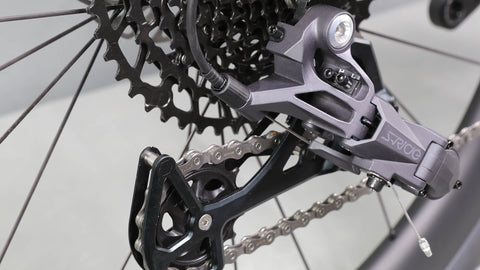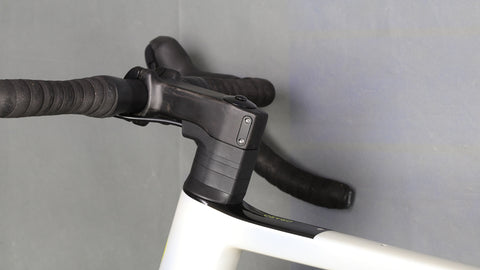I. Introduction
Lightweight, rigid, and remarkably good performance are hallmarks of carbon bikes. Maintaining excellent performance and lifetime of your carbon bike depends on proper care and maintenance. Your carbon bike and its parts will be in great shape for many years to come by following a few basic rules.

II. Cleaning and Maintenance
Spend a few minutes looking over your carbon bike for any obvious cracks or damage before every ride. Pay very attentive attention to places like the frame, fork, and handlebars that can be impacted. If you spot any damage, you should take quick care of it to avoid more problems.
Time to clean your carbon bike comes following the inspection. Starting with dirt, muck, and trash from the frame, wheels, and components, To clean difficult-to-reach spots, use a soft brush or sponge in conjunction with a mild soap or specialist bike cleaner. High-pressure water should not be used since it can drive water into fragile parts. Once the cleaning is finished, totally dry the bike to stop water damage. Apply a bike polish or spray wax to provide further protection following cleaning, rinsing, and drying.

III. Lubrication and Rust Prevention
Smooth running and lifetime of the drivetrain and moving components depend on proper lubrication. Choose a lubricant for your carbon bike, especially one developed for carbon components. Apply the lubricant to the chain, derailleurs, and brake pivot points according to manufacturer directions. Frequent lubrication helps to lower friction, stop early wear, and preserve best performance.
Furthermore, consider metal parts that might rust. Search metal components including bolts, nuts, and other fasteners for rust. As necessary to stop corrosion and preserve the integrity of your carbon bike, apply a protective coating or rust inhibitor.

IV. Storage and Transportation
Proper storage of your carbon bike is absolutely vital when not in use. Store it in a dry, climate-regulated area to avoid moisture accumulation that may cause damage or corrosion. Your bicycle and its parts should not be left in direct heat. You should so avoid leaving them in the sun or store them near radiators or heat sources inside a parked automobile. If you live close to an ocean where the air is heavily salted, or if you sweat too much, you need to be especially careful to wash and rinse the salt off your bike and parts. This will assist in guarding the metal components from any potential corrosion.
Use care to shield your carbon bike from possible harm on route. Should you have to move your bike, make use of a travel-oriented bike backpack or case. In transit, properly secure the bike and cover the frame with foam at the attachment points.

V. Inspecting for Damage and Wear
Early detection of possible problems and avoidance of more damage depend on regular inspections. Create a schedule to go over the frame and parts for damage, dents, or cracks. Pay particular attention to places where tension is concentrated—that is, the bottom bracket, seat stays, and headtube. See a specialist for a comprehensive assessment should you find any anomalies or suspected injury.
One should also check the wheels for spoke tension and trueness. Make sure that the wheels run without rubbing against the brake pads or wobbling. To preserve best wheel performance, check the spoke tension and make the required corrections.
VI. Component-specific Care
Important parts that call for particular maintenance are handles, seatposts, and stems. Check the torque often; then, tighten these parts as advised by the manufacturer. Try not to overtighten; this can compromise the carbon structure. Use carbon assembly paste for correct grip and slippage prevention when installing or modifying carbon components.
Especially with regard to braking, carbon wheels call for extra care. Look often for wear or damage on the brake surface. Steer clear of utilizing incompatible brake pads since they might impair the carbon structure and lead to too much heat generation. Following manufacturer recommendations for brake pad compatibility and maintenance guarantees dependable and safe braking performance.

VII. Professional Servicing and Tune-ups
Although the bike owner can conduct regular maintenance, occasional expert servicing is strongly advised. Expert bike stores have the knowledge and specific instruments needed to do thorough inspections and repairs. To guarantee best performance, they can verify and adjust important parts, including the drivetrain, headset, and bottom bracket. Bringing your carbon bike for professional maintenance helps you spot possible problems before they become more significant.
Riding conditions, mileage, and usage habits all influence tune-up and servicing frequency. To find the suitable service intervals for your carbon bike, follow manufacturer instructions or ask a nearby bike shop for guidance.

VIII. Conclusion
Caring for carbon bikes and parts is crucial to ensuring their performance, longevity, and safety. By following a proper cleaning routine, lubricating moving parts, inspecting for damage, and seeking professional servicing when needed, you can maintain your carbon bike in excellent condition for years to come. Remember, investing time and effort in the care and maintenance of your carbon bike will pay off with enhanced riding experience and prolonged enjoyment of your two-wheeled companion.
